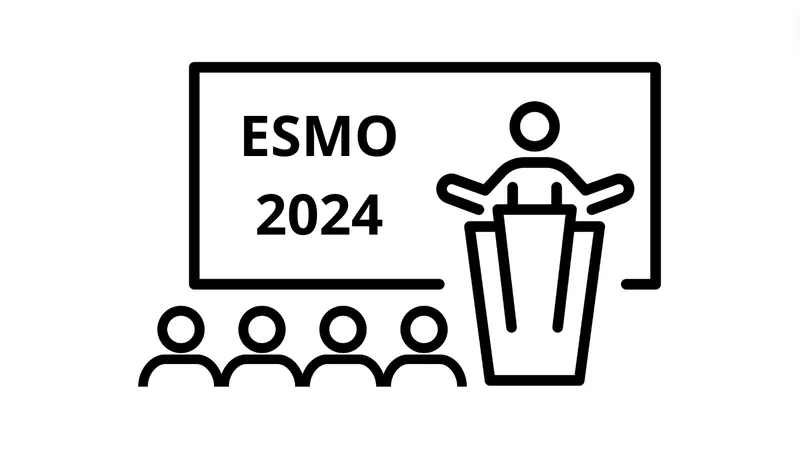
Breakthrough in Nasal and Paranasal Sinus Cancer Treatment: Neoadjuvant Therapy Shows Promise!
2024-09-17
Introduction
Recent findings presented at the 2024 ESMO Congress spotlight the potential benefits of neoadjuvant chemotherapy in enhancing treatment outcomes for patients suffering from nasal and paranasal sinus squamous cell carcinoma (NPNSCC). The phase 2 EA3163 trial (NCT03493425) demonstrated that incorporating neoadjuvant therapy, alongside postoperative radiation treatment (PORT), may lead to better organ preservation for individuals with advanced disease (T3 and T4a).
Study Results
Among the participants with T3 or T4a NPNSCC (n = 18), the structural preservation rate was an encouraging 33%. Notably, patients who underwent neoadjuvant chemotherapy (n = 7) were observed to have a higher structural preservation (SP) rate of 57%, in contrast to just 18% for those who moved straight to surgery (n = 11). Although these results hint at a trend favoring neoadjuvant treatment, statistical significance was not achieved (P = .14).
When extending the evaluation to include patients with more advanced T4b stage (n = 23), the overall SP rate dipped slightly to 30%. However, in the neoadjuvant chemotherapy group (n = 10), the SP rate remained promising at 50%, while those who only received standard treatment showed a mere 15% (P = .17).
Expert Commentary
Dr. Nabil Saba, the lead author of the study from the Winship Cancer Institute at Emory University, emphasized the significance of these findings during his presentation. "Despite challenges with enrollment and the study being underpowered, there is a notable trend towards improved SP in patients with resectable disease," he stated. Notably, the difficult positioning of NPNSCC near critical structures such as the orbit and base of the skull can complicate treatment and lead to higher morbidity and mortality rates.
Study Design Overview
The EA3163 trial was structured as a randomized, multicenter phase 2 study, targeting patients with stage T3, T4a, and selected T4b NPNSCC who needed skull base or orbital resection. Participants were assigned to either surgical intervention followed by post-operative radiation—with or without cisplatin—or to receive neoadjuvant chemotherapy involving docetaxel and cisplatin or carboplatin prior to surgery.
The study primarily aimed to evaluate SP rates—striving for a significant increase from an anticipated 2% in the control group to 18%—and overall survival (OS). The research hypothesized that neoadjuvant therapy could reduce mortality risks by 42%, estimating a two-year OS rate of 50% for the neoadjuvant group against 30% for the surgery-only group.
The enrollment for this ambitious study commenced on March 28, 2018, but was unfortunately halted on November 7, 2023, due to challenges in participant recruitment.
Patient Demographics and Efficacy Results
A total of 29 patients were enrolled, with a median age of 63.4 years. Most participants were male (64%) and predominantly presented with T4a disease (56%). Alarmingly, 91% of these patients showed baseline base of skull involvement, and 61% had orbital involvement, suggesting a highly aggressive disease landscape.
The overall orbital preservation rate reached 57% among all evaluable patients, with the neoadjuvant chemotherapy group achieving a commendable 70% compared to 46% in the surgery-only group. For those without T4b disease, the rates of orbital and skull base preservation were 56% and 61%, respectively. Notably, within the chemotherapy arm, T3 and T4a patients enjoyed preservation rates of 71% and 86% for the orbit and skull base, respectively.
Although OS data is still maturing, preliminary estimates indicate that both treatment arms have a similar estimated two-year survival rate, hovering around 90%.
Conclusion
As the fight against nasal and paranasal sinus cancers continues, these promising results open the door to future studies and treatment strategies that might significantly improve the quality of life and survival rates for affected patients. Could this be the breakthrough everyone has been waiting for? Stay tuned for more updates on this revolutionary approach to cancer treatment!


 Brasil (PT)
Brasil (PT)
 Canada (EN)
Canada (EN)
 Chile (ES)
Chile (ES)
 España (ES)
España (ES)
 France (FR)
France (FR)
 Hong Kong (EN)
Hong Kong (EN)
 Italia (IT)
Italia (IT)
 日本 (JA)
日本 (JA)
 Magyarország (HU)
Magyarország (HU)
 Norge (NO)
Norge (NO)
 Polska (PL)
Polska (PL)
 Schweiz (DE)
Schweiz (DE)
 Singapore (EN)
Singapore (EN)
 Sverige (SV)
Sverige (SV)
 Suomi (FI)
Suomi (FI)
 Türkiye (TR)
Türkiye (TR)